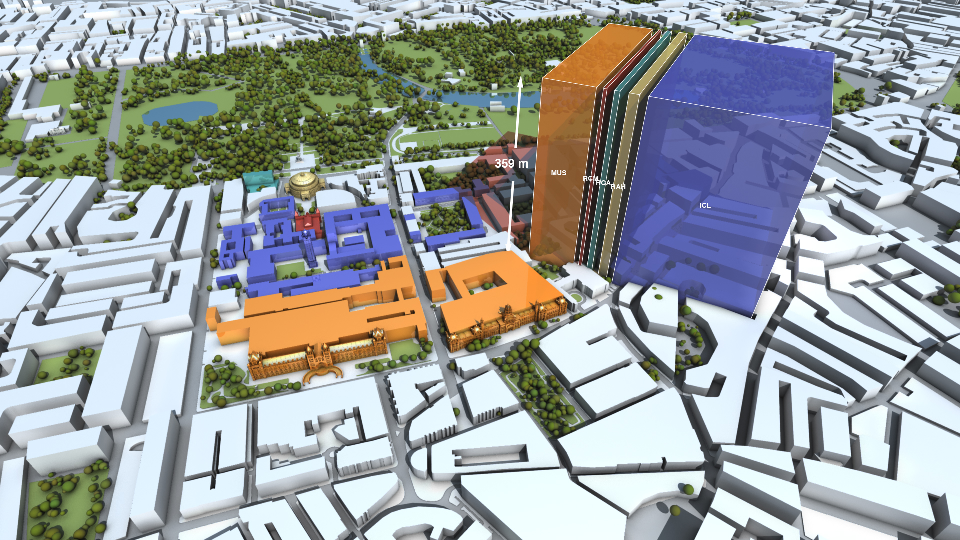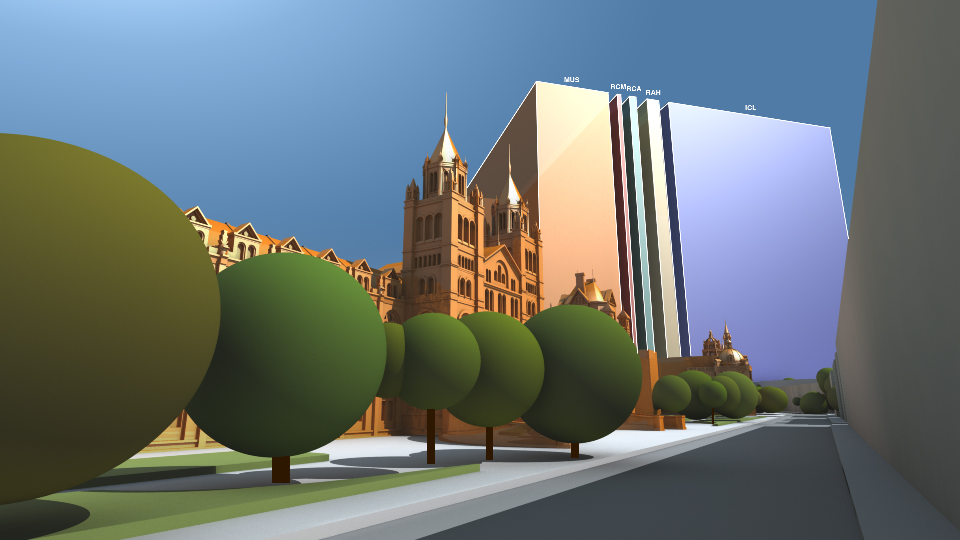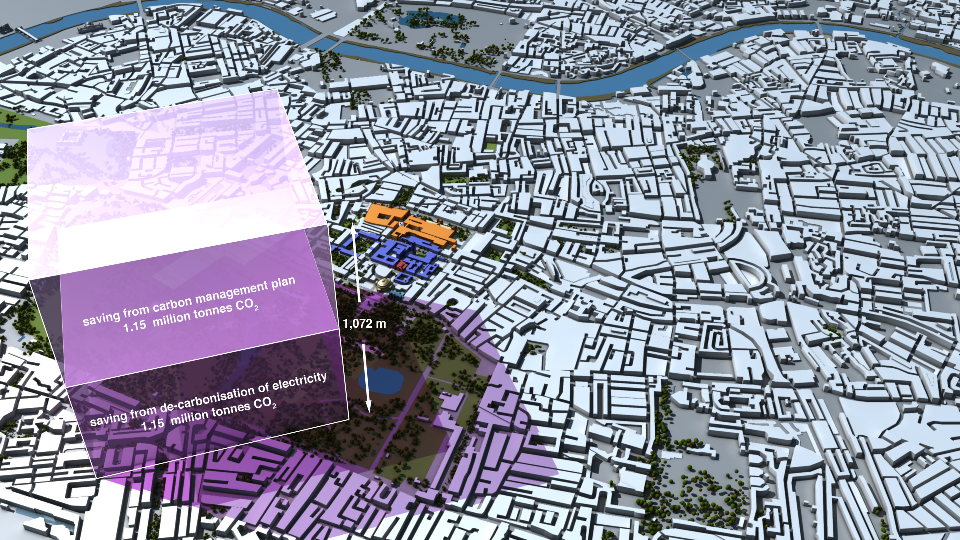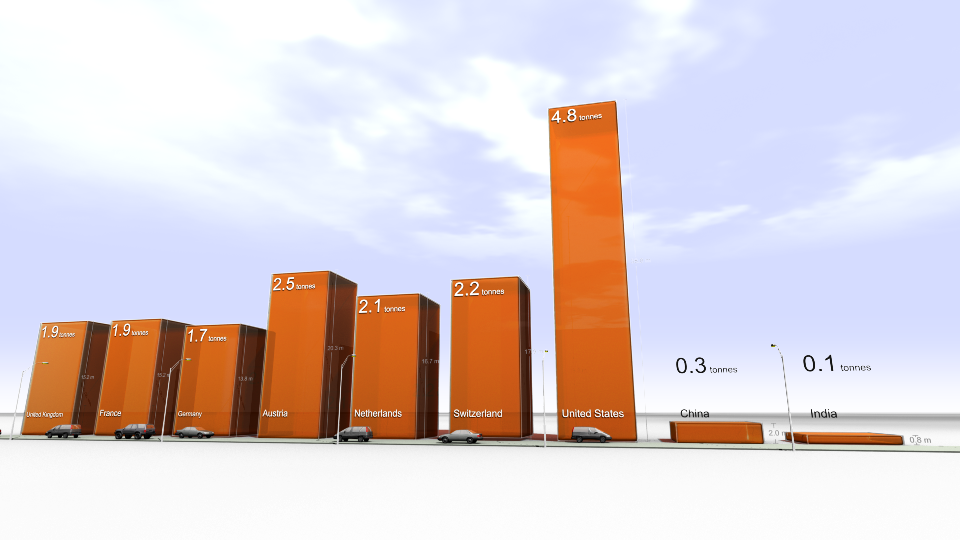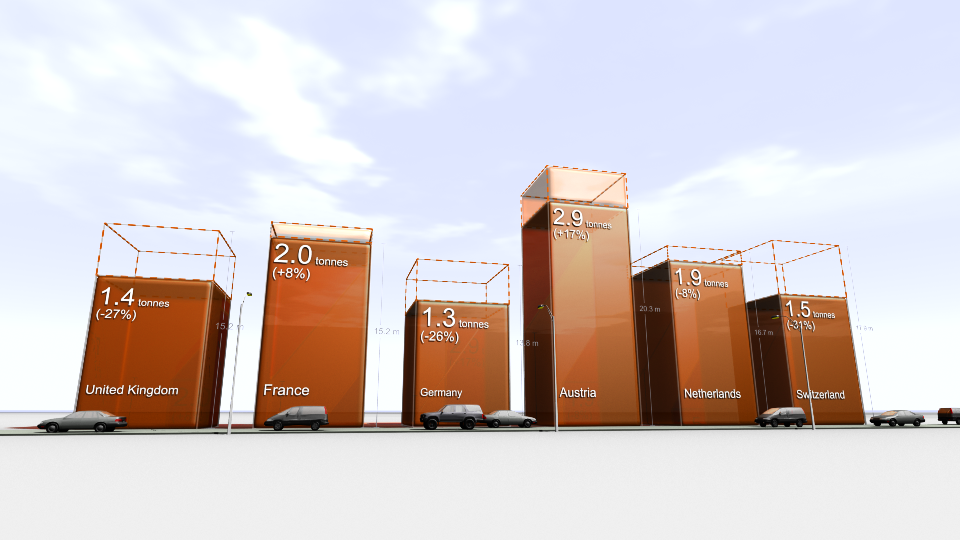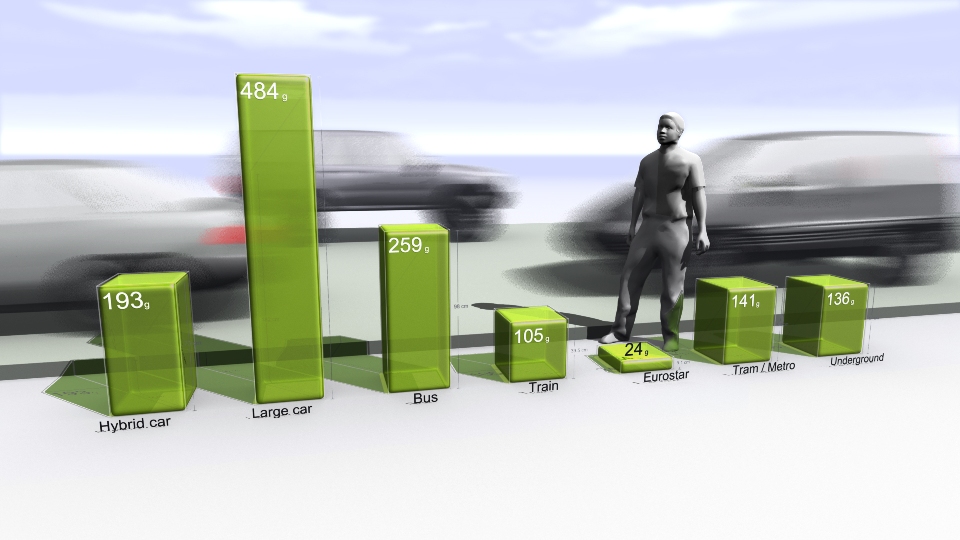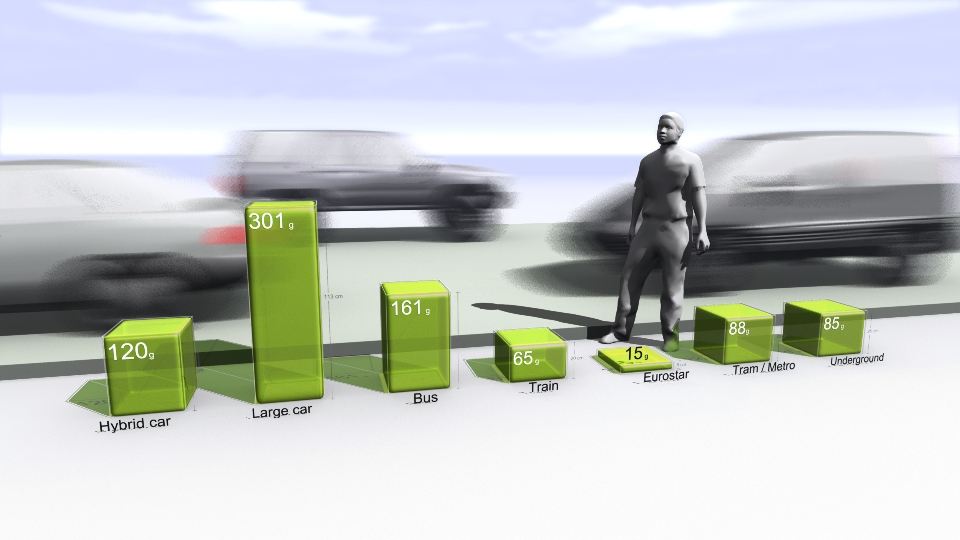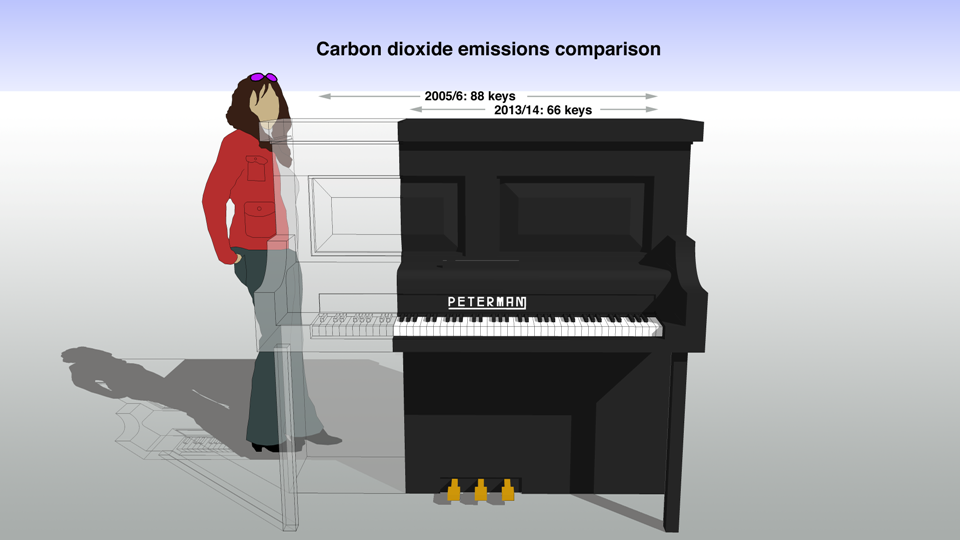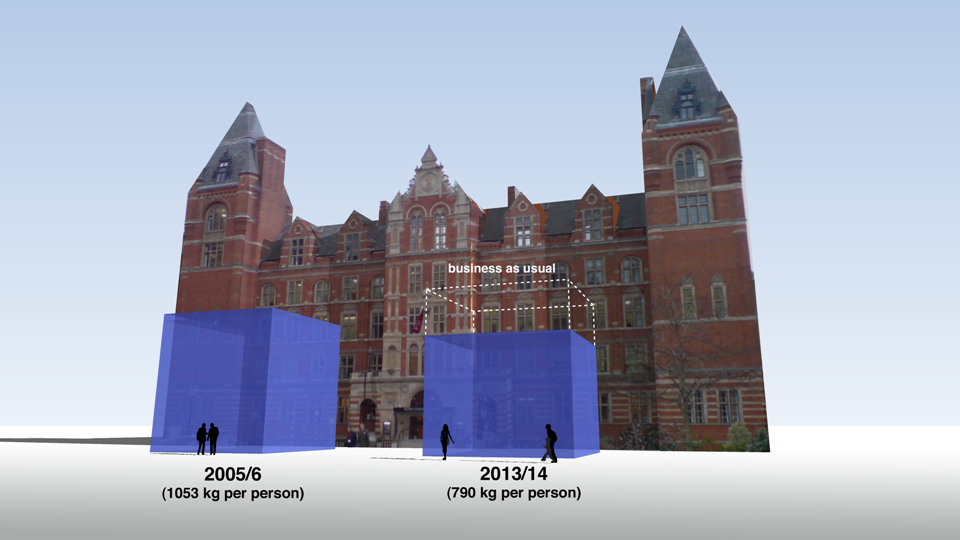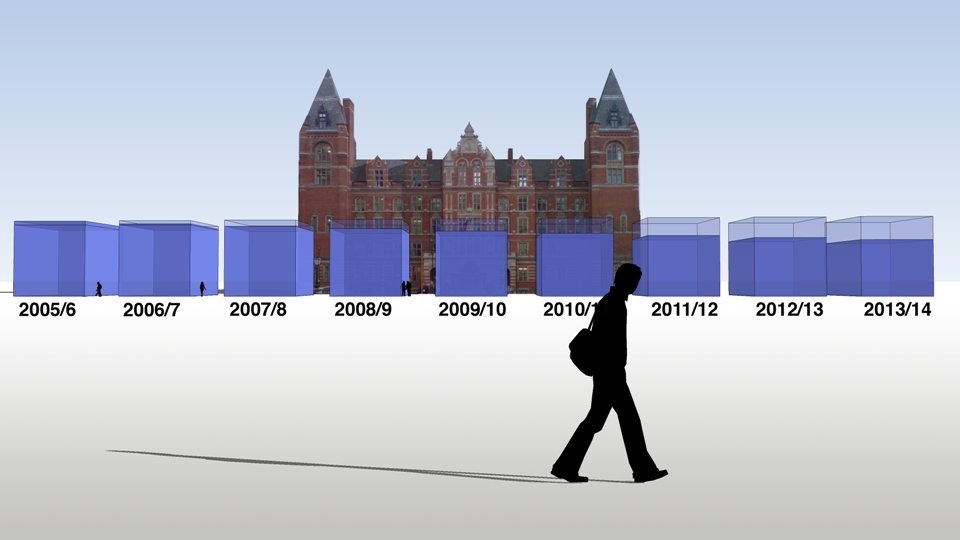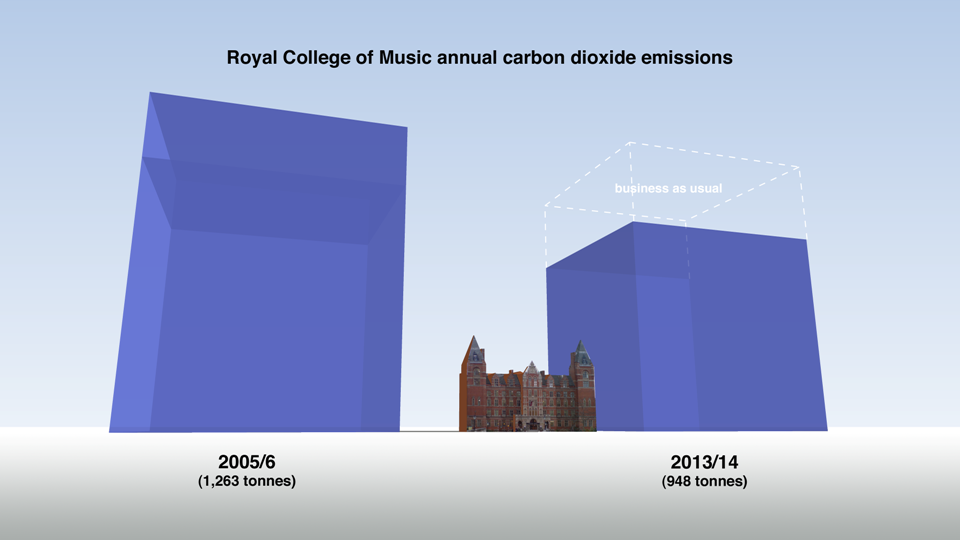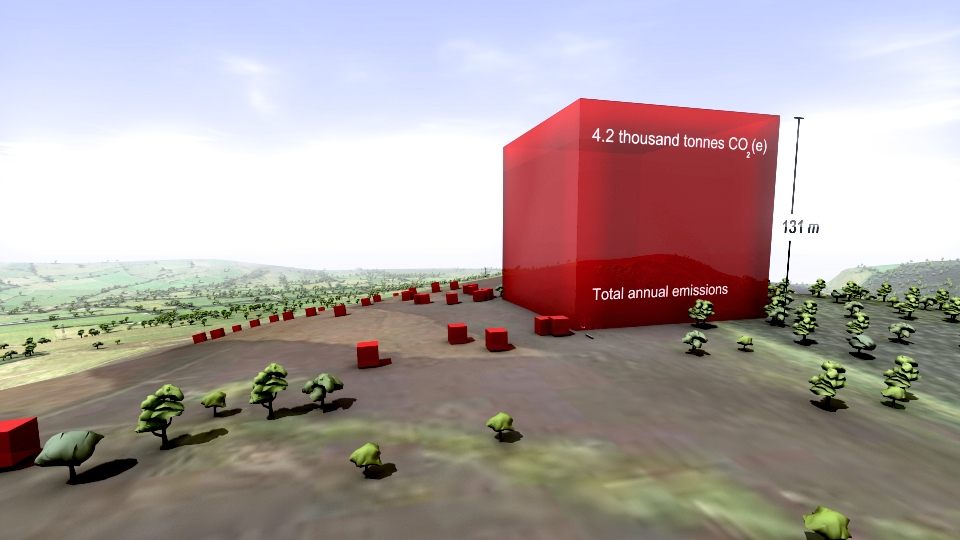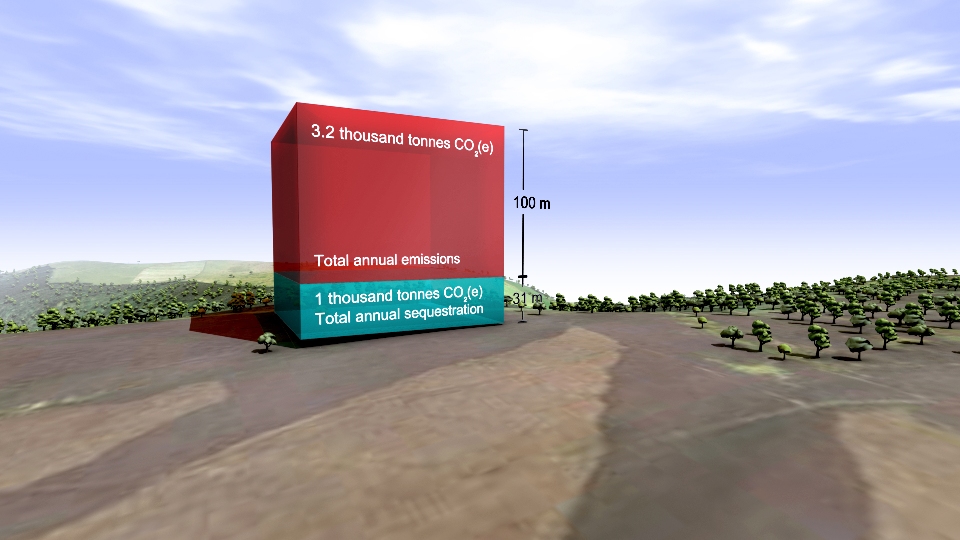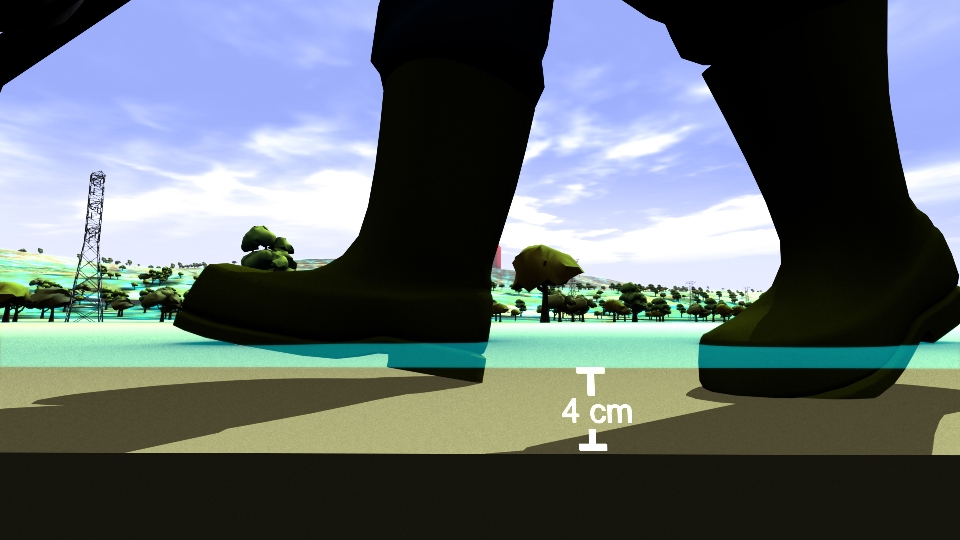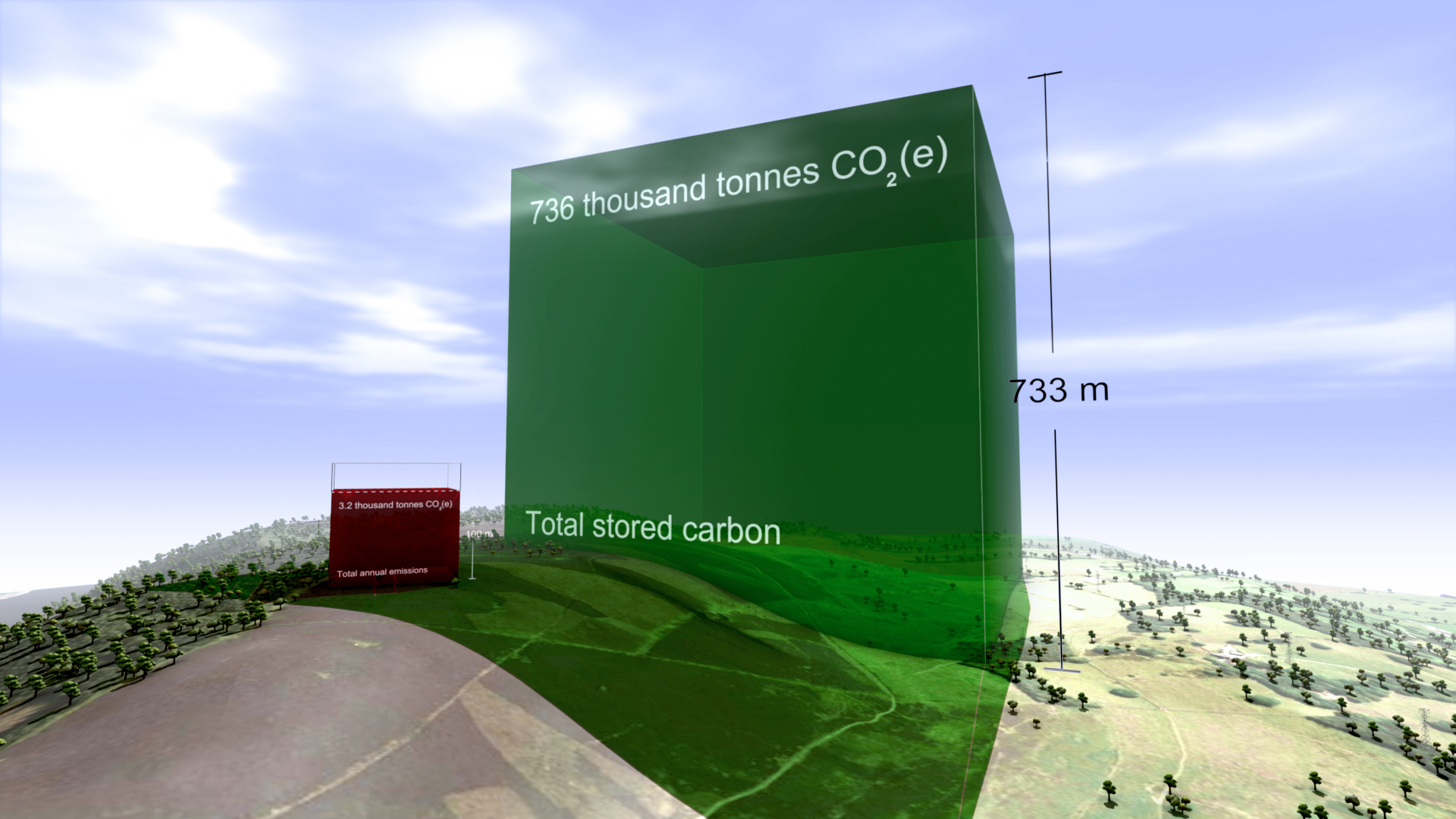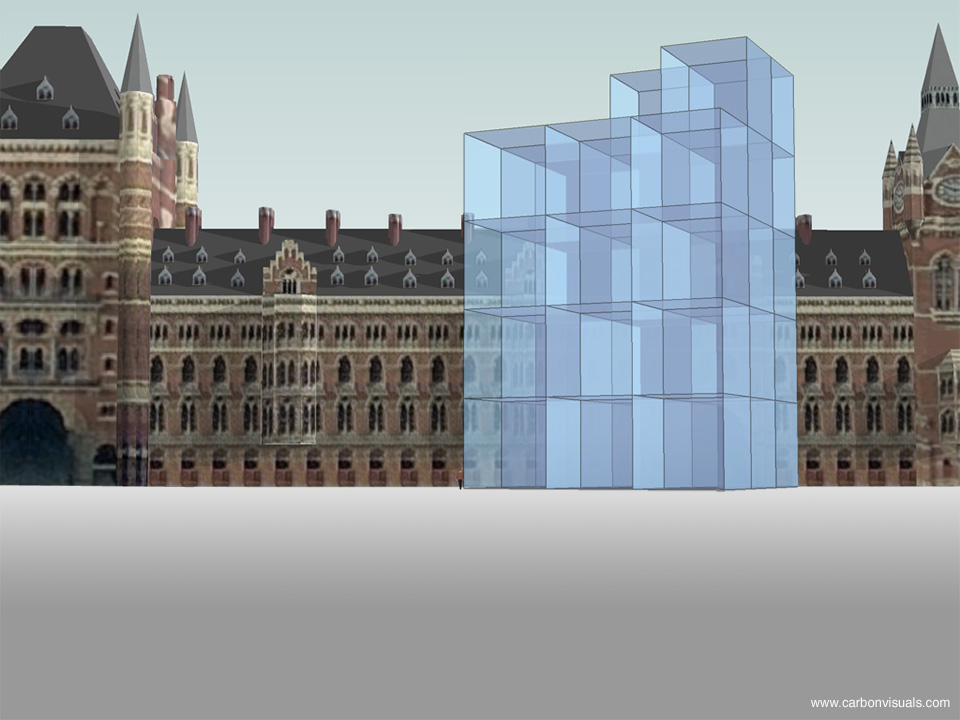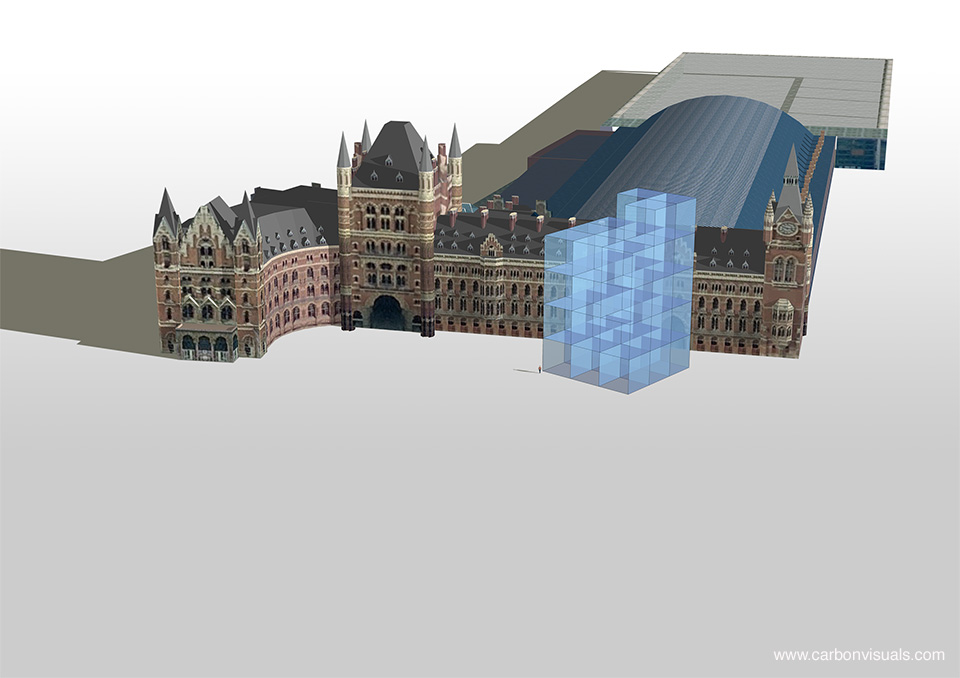ModCell is a novel and innovative building system that brings the benefit of straw bale construction - exceptional levels of insulation - into the mainstream of the construction industry. Carbon Visuals was asked to provide images to show the sequestered carbon dioxide in panels and in a recently completed project - a school science centre in Bath.
UCLH - a diverse estate
Illustrating carbon reduction potential for South Kensington 1851 Estate
CLIENT
Natural History Museum, Science Museum, V&A, Imperial College and Royal Albert Hall
PURPOSE
To illustrate the carbon reduction potential for the South Kensington 1851 Estate.
DESCRIPTION
Striking image set, to illustrate the Carbon Reduction Masterplan launched by the Minister of State for Energy and Climate Change.
Carbon Visuals has created a set of striking images to illustrate the carbon reduction potential for the South Kensington 1851 Estate. Organisations involved include the Natural History Museum, the Science Museum, the Victoria and Albert Museum, Imperial College, the Royal Albert Hall, the Royal College of Music and the Royal College of Arts.
These prestigious institutions came together in 2005 to embark on an inspirational long-term carbon reduction plan. Phase One involved laying the foundations and creating a realistic strategy. The Masterplan, launched in November 2011, marks the conclusion of that phase and the commencement of its realisation.
Carbon Visuals aided communication amongst the parties and with external stakeholders by creating striking imagese at various stages of the project.
Creating a computer generated model of the Estate enabled a wide range of different images to be created - wide angle, close-up, aerial and ground level.
To see the context in which the images were used feel free to download the PDF of the overview brochure.
The carbon footprint of the UK potato
CLIENT
ADAS
PURPOSE
To illustrate their capability to help farmers manage and reduce emissions.
DESCRIPTION
Film that combines live action and animation to explore the carbon footprint of the UK potato at personal and farm scales.
ADAS, the land and farming consultancy, wanted to compliment the earlier film that we made to illustrate emissions, sequestration & stored carbon on upland farms in the Peak District National Park. This time they were keen to illustrate their capabilities in helping mainstream farmers manage and reduce their carbon emissions.
The film explores the carbon footprint of the UK potato at the personal scale, as well as carbon saving potential at the farm scale.
More info from ADAS Carbon Management Team
To see all our work for ADAS, click here.
Carbon Visuals is keen to explore the use of film for helping everyone better understand carbon emissions from everyday activities. Please contact us if you have ideas.
Supporting BP's interactive carbon calculator for motorists
CLIENT
BP
PURPOSE
To encourage motorists reduce emissions from driving.
DESCRIPTION
Consultancy and visuals for a web calculator showing actual volumes of CO2 which change in size as reduction actions are chosen, with image set and methodology.
Carbon Visuals helped newly re-launched BP Target Neutral project by providing consultancy for the web calculator designed to help motorists reduce, replace and offset carbon dioxide from driving. The calculator, aimed at the general public, is the first in the world to show actual volumes of CO2 which change in size as different reduction actions are chosen. In addition carbon spheres can be compared against averages for other countries as well as the UK 'target' reduction for 2050.
We also provided a number of bespoke images to highlight transport emissions in the UK, emissions of different transport types as well as transport emissions per capita for different countries.
Our Creative Director, Dr Adam Nieman also provided an overview of the importance of carbon visualisation
The first visual image uses Spaghetti Junction on the M6 near Birmingham as this basic ground. The familiar image from the British road network makes the immediate point that this is about roads, but then uses the recognisable scale to locate a cube-like shape showing the volume of carbon our cars, lorries and buses put into the atmosphere every day.
The cube presents this visually, while the simple captions fill in the specific details. This, the image is saying, is what 90,000 tonnes of carbon dioxide look like, and that’s what we’re pumping into the atmosphere every day. Suddenly the daily figure is something real and dramatic.
The BP Target Neutral Methodology PDF outlines the data, calculations and assumptions in the image set.
Bringing the Royal College of Music carbon management plan to life
The Royal College of Music worked with the Carbon Trust to develop a Carbon Management Plan, which was published in July 2010. The Plan highlighted a number of actions that could be taken to reduce emissions by 25% by 2013/14.
A key part of the Plan was to get students and staff engaged in the issues, so Carbon Visuals were invited to find innovative ways to communicate the carbon footprint and emissions reduction targets.
It was a very worth while project and has been a well recieved way of getting this difficult message across
Matthew Nicholl, Building Project Manager, Royal College of Music
To turn abstract numbers into quantities that viewers could relate to physically, we used a depiction of the College building. We also proposed a way for musicians in particular to gauge a 25% reduction – it’s like losing nearly two octaves from a piano.
Some of these images are being used for posters, leaflets and presentations to help staff and students have a better understanding of their carbon footprint and create ‘ownership’ of reduction plans and targets.
Emissions, sequestration & stored carbon on upland farms
Carbon Visuals have created this short animation film to show the emissions, sequestration & stored carbon on ten upland farms in the Peak District National Park. The farms extend over 1,500 hectares and comprise part moorland, part pasture.
The data was taken from ADAS Report Environmental Quality Mark (EQM) Farm Carbon Footprint and Water Audit Pilot Project.
The core message from the film is that these farms are not only producing food and preserving the landscape. They are performing an important role as guardians of a huge carbon store that is best kept in soils and vegetation.
We believe that this is a 'world first' for this type of medium. Created for the consultancy ADAS, the film demonstrates the potential for moving animation to communicate complex carbon stories.
The film is being used to engage a variety of stakeholders including ADAS staff, farm managers and agricultural policymakers.
To see all our work for ADAS, click here.
If you like this approach, and feel that it would suit your particular carbon communication challenge, then please contact us.
Engaging employees at the Guardian News and Media Group
The Guardian News and Media Group turned to Carbon Visuals to get employees involved in reducing the company’s carbon footprint. On an average day between April 2007 and March 2008, GNM emitted 39 tonnes: 20 tonnes from two print sites, 14 tonnes from offices and five tonnes from business travel.
The Guardian offices are near St Pancras Station - a landmark that employees can relate to physically. Viewers can see the picture and know what such a pile of one tonne cubes would be ‘like’.
Guardian News and Media's daily carbon dioxide emissions. On an average day between April 2007 and March 2008, GNM emitted 39 tonnes: 20 tonnes from 2 print sites,14 tonnes from the old offices and 5 tonnes from business travel. One tonne of carbon dioxide gas would fill a cube of 8.12 metres high. Viewing the pile of 1-tonne cubes from eye-level can give a viewer a better sense of the height.

